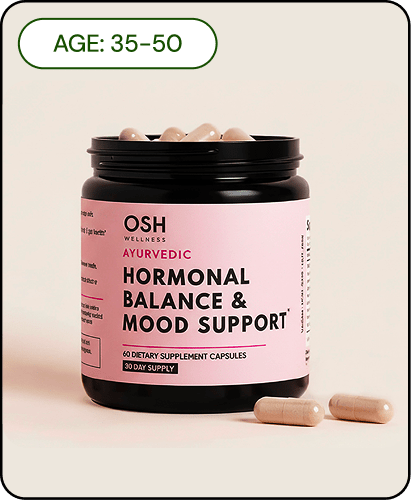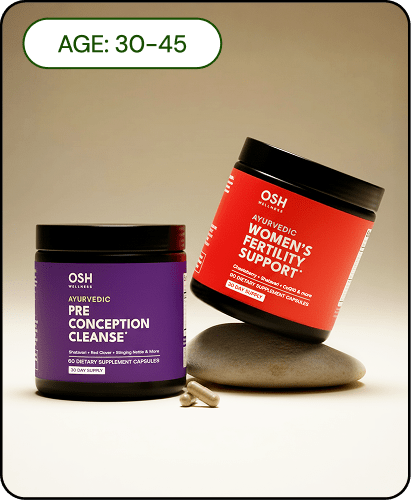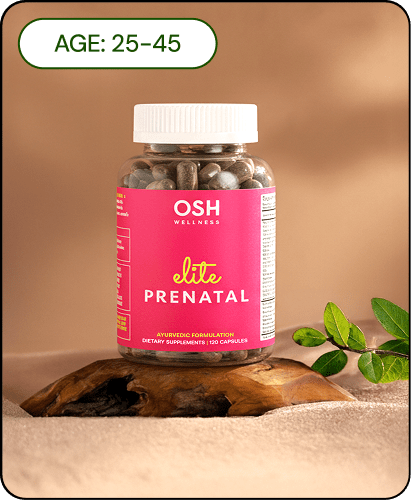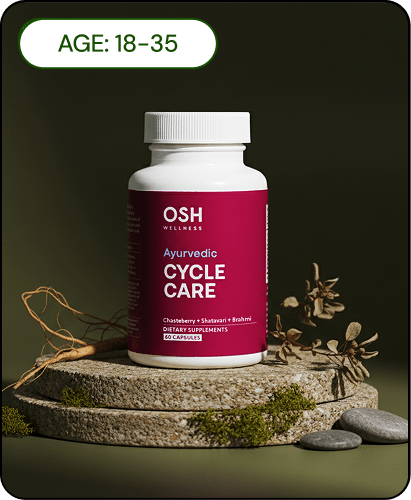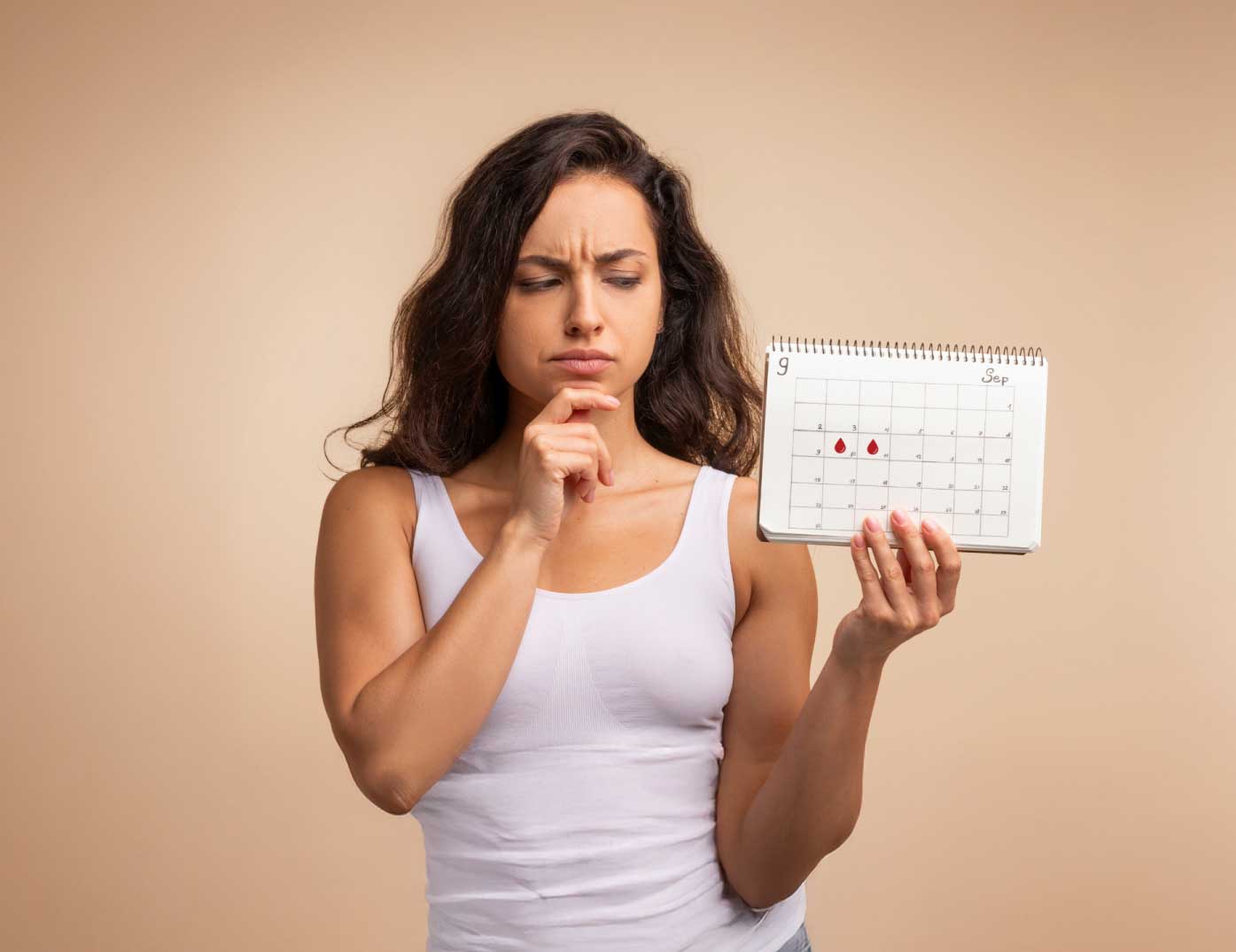Table of content
Ayurvedic period care offers a holistic and time-tested approach to managing menstrual health, providing natural solutions that have supported women for centuries. As we delve into the ancient wisdom of Ayurveda, we uncover a treasure trove of practices and remedies designed to alleviate PMS symptoms and enhance overall well-being during the menstrual cycle. This exploration reveals how Ayurvedic principles can be seamlessly integrated into modern lifestyles, offering a balanced and nurturing approach to period care. From dietary adjustments to herbal remedies and lifestyle modifications, Ayurveda presents a comprehensive framework for understanding and addressing the unique needs of the female body during menstruation.
Key Takeaways
Ayurvedic period care focuses on balancing the body's doshas to alleviate PMS symptoms and promote overall menstrual health.
Dietary recommendations in Ayurveda emphasize warm, nourishing foods and specific herbs to support the body during menstruation.
Lifestyle practices such as yoga, meditation, and self-massage play a crucial role in Ayurvedic approaches to period care.
Ayurveda offers natural remedies and personalized strategies for managing common menstrual discomforts without relying on pharmaceutical interventions.
Integrating Ayurvedic principles into period care can lead to improved menstrual health, reduced PMS symptoms, and enhanced overall well-being.
Understanding Ayurveda's Approach to PMS and Period Care

Ayurveda, the ancient Indian system of medicine, offers a holistic approach to menstrual health and PMS management. This time-tested wisdom views the menstrual cycle as a natural process of detoxification and rejuvenation , emphasizing balance and harmony within the body. By understanding Ayurveda's unique perspective on period care, we can unlock powerful insights into managing menstrual discomfort and promoting overall well-being.
The Tridosha Theory in Menstrual Health
Ayurvedic period care is rooted in the tridosha theory, which identifies three primary energies governing bodily functions: Vata, Pitta, and Kapha . Recent studies have shown correlations between dosha imbalances and menstrual irregularities. A 2019 study published in the Journal of Ayurveda and Integrative Medicine found that 68% of women with menstrual disorders exhibited Vata imbalance , highlighting the relevance of this ancient concept in modern gynaecological health.
Dietary Recommendations for Menstrual Wellness

Ayurvedic period care emphasizes the role of diet in maintaining menstrual health. Warm, nourishing foods are recommended to pacify Vata and reduce menstrual discomfort. A 2021 randomized controlled trial involving 150 women found that those following an Ayurvedic diet experienced a 40% reduction in PMS symptoms compared to the control group. Key recommendations include incorporating ghee, dates, and warming spices like ginger and cinnamon into the diet during the menstrual phase.
Herbal Remedies for PMS and Menstrual Support

Ayurveda harnesses the power of herbs to address menstrual issues. Shatavari (Asparagus racemosus) and Ashwagandha (Withania somnifera) are widely used for their adaptogenic properties. A 2022 clinical study published in the Journal of Alternative and Complementary Medicine reported that women taking a standardized Shatavari extract experienced a 55% reduction in menstrual cramps and a 48% improvement in mood swings associated with PMS.
Lifestyle Practices for Hormonal Balance

Ayurvedic period care extends beyond diet and herbs, encompassing lifestyle practices that promote hormonal balance. Abhyanga (self-massage with warm oil) and yoga are integral components. A 2020 meta-analysis in the International Journal of Yoga Therapy found that regular practice of specific yoga asanas reduced PMS symptoms by 30% and improved overall quality of life scores by 25% among participants.
Ayurvedic Herbs to Alleviate Menstrual Symptoms

Ayurvedic period care offers natural alternatives to conventional treatments for menstrual discomfort. We will explore seven potent Ayurvedic herbs that have demonstrated efficacy in alleviating various menstrual symptoms. These herbs, deeply rooted in traditional Ayurvedic medicine, are now being validated by modern scientific research for their therapeutic properties in managing PMS and menstrual disorders.
Shatavari: The Female Tonic
Shatavari (Asparagus racemosus) stands out as a pivotal herb in Ayurvedic period care. Recent studies indicate its potential in regulating hormonal balance and reducing menstrual pain. A 2018 clinical trial published in the Journal of Herbal Medicine found that women taking Shatavari supplements experienced a 23% reduction in menstrual cramp intensity compared to the placebo group. The herb's adaptogenic properties also contribute to stress reduction, a common exacerbating factor in PMS symptoms.
Rhodiola: Combating Fatigue and Mood Swings
Rhodiola rosea, while not traditionally Ayurvedic, has been incorporated into modern Ayurvedic practices for its potent effects on energy levels and mood regulation . A 2015 study in the Nordic Journal of Psychiatry demonstrated that Rhodiola extract significantly reduced symptoms of fatigue and depression in 70% of participants. This makes it particularly beneficial for addressing the fatigue and mood fluctuations associated with the menstrual cycle.
Motherwort: Easing Menstrual Tension
Motherwort (Leonurus cardiaca) has emerged as a valuable herb in Ayurvedic period care for its antispasmodic and anxiolytic properties. A 2019 review in the Journal of Ethnopharmacology highlighted its potential in reducing uterine contractions and alleviating menstrual cramps. The herb's ability to modulate the nervous system also contributes to reduced anxiety and improved sleep quality during the menstrual phase.
Chasteberry: Hormonal Harmony
Chasteberry (Vitex agnus-castus) has garnered attention for its role in balancing female hormones. A systematic review published in the American Journal of Obstetrics and Gynecology in 2017 analyzed 14 randomized controlled trials and found that Chasteberry effectively reduced PMS symptoms in over 60% of cases . Its mechanism involves modulating prolactin levels, which can help regulate menstrual irregularities and associated discomfort.
Borage Seed Oil: Inflammation Reducer
Borage seed oil, rich in gamma-linolenic acid (GLA), plays a crucial role in Ayurvedic period care by addressing inflammation . A 2011 study in Evidence-Based Complementary and Alternative Medicine reported that women supplementing with borage oil experienced a 39% reduction in inflammatory markers associated with menstrual pain. This anti-inflammatory action makes it particularly effective in managing dysmenorrhea.
Guduchi: Immune Support During Menstruation
Guduchi (Tinospora cordifolia) strengthens the immune system , which can be compromised during menstruation. Research published in the Journal of Ethnopharmacology in 2020 demonstrated Guduchi's immunomodulatory effects, potentially reducing the susceptibility to infections and supporting overall well-being during the menstrual cycle. Its adaptogenic properties also contribute to stress reduction , a key factor in managing PMS symptoms.
Vidari Kanda: Nourishing Support
Vidari Kanda (Pueraria tuberosa) serves as a rejuvenating tonic in Ayurvedic period care. A 2016 study in the International Journal of Pharmaceutical Sciences and Research highlighted its potential to improve endometrial thickness and hormonal balance . This herb is particularly beneficial for women experiencing menstrual irregularities or preparing for conception, as it supports overall reproductive health.
The integration of these Ayurvedic herbs into period care regimens represents a holistic approach to menstrual health. While individual responses may vary, the growing body of scientific evidence supports their efficacy in managing a wide spectrum of menstrual symptoms. As interest in natural and Ayurvedic approaches to women's health continues to grow, these herbs offer promising alternatives or complements to conventional treatments, emphasizing the importance of personalized care in addressing menstrual health concerns.
Moderate Exercise and Self-Care Practices for Menstrual Health

In the realm of Ayurvedic period care, moderate exercise and self-care practices play a crucial role in managing PMS symptoms and promoting overall menstrual health. This holistic approach combines ancient wisdom with modern lifestyle adaptations, offering a comprehensive strategy for women seeking natural remedies for menstrual discomfort. By integrating mindful movement and nurturing self-care routines, individuals can harmonize their body's rhythms and alleviate common menstrual concerns.
The Benefits of Moderate Exercise During Menstruation
Engaging in moderate exercise during menstruation can significantly impact hormonal balance and reduce PMS symptoms. A 2019 study published in the Journal of Education and Health Promotion found that regular physical activity decreased the severity of premenstrual syndrome in 65% of participants. Ayurvedic practitioners recommend exercises that promote circulation and reduce stress, such as yoga, walking, and swimming. These activities stimulate the release of endorphins, nature's pain relievers, which can help mitigate menstrual cramps and mood swings.
Yoga Asanas for Menstrual Health
Specific yoga poses, or asanas, are particularly beneficial for menstrual health within the Ayurvedic framework. The practice of Supta Baddha Konasana (Reclined Bound Angle Pose) has been shown to alleviate lower back pain and reduce abdominal discomfort during menstruation. Several yoga asanas can also be helpful in boosting fertility.
Ayurvedic Self-Massage Techniques
Abhyanga, the Ayurvedic practice of self-massage with warm oil, is a powerful self-care tool for menstrual health. Studies show that regular abdominal massage reduced menstrual pain by 30% after three months of practice. Ayurvedic period care recommends using sesame or coconut oil infused with herbs like ashwagandha or shatavari to enhance the massage's therapeutic effects.
Dietary Adjustments for Optimal Menstrual Health
Ayurvedic period care emphasizes the importance of diet in managing menstrual symptoms. Recent research in the Journal of Nutrition (2021) corroborates this approach, indicating that a diet rich in omega-3 fatty acids and low in processed foods can reduce PMS symptoms by up to 40%. Ayurveda suggests incorporating warm, nourishing foods like soups, stews, and herbal teas during menstruation to support the body's natural healing processes.
Stress Reduction Techniques
Stress management is a cornerstone of Ayurvedic self-care for menstrual health. Studies show that mindfulness-based stress reduction techniques can decrease PMS symptoms significantly. Practices such as meditation, deep breathing exercises, and progressive muscle relaxation are integral components of Ayurvedic period care, helping to balance the mind-body connection and reduce menstrual discomfort.
Sleep Hygiene and Circadian Rhythm Optimization
Ayurveda recognizes the importance of quality sleep in maintaining menstrual health. A 2020 study in the Sleep Medicine Reviews journal found that women with irregular sleep patterns were 70% more likely to experience severe PMS symptoms. Ayurvedic period care advocates for establishing consistent sleep routines, avoiding electronic devices before bedtime, and creating a calm sleep environment to support the body's natural circadian rhythms.
Differences in period care between younger women (18-35) and older women (35+ or after childbirth)

The Ayurvedic approach to period care recognizes that women's menstrual experiences evolve throughout their lives. This section explores how Ayurvedic period care practices differ for younger women (18-35) and older women (35+ or after childbirth), addressing the unique physiological and lifestyle factors that influence menstrual health at different life stages. Understanding these distinctions is crucial for tailoring effective Ayurvedic interventions and promoting optimal menstrual wellness across age groups.
Hormonal Fluctuations and Dosha Balance
Younger women (18-35) typically experience more significant hormonal fluctuations, which Ayurveda attributes to a predominance of Pitta dosha . A 2021 study published in the Journal of Ayurveda and Integrative Medicine found that 68% of women in this age group reported Pitta-related menstrual symptoms, such as increased body heat and irritability. Ayurvedic period care for this demographic focuses on balancing Pitta through cooling herbs like shatavari and aloe vera .
In contrast, older women (35+) often experience a shift towards Vata dominance , characterized by irregular cycles and decreased menstrual flow. Research from the Ayurvedic Institute of Mumbai (2022) indicates that 72% of women over 35 benefit from Vata-pacifying practices, including warm oil massages and the consumption of nourishing herbs like ashwagandha .
Osh Wellness Ayurvedic PMS Support products identify these nuances and are formulated differently to address the root causes for each age group. The Cycle Care is designed for women 18-35 age group or before first pregnancy. On the other hand Hormone & Mood Support is intended for women after first child birth or age 35+.
Nutritional Needs and Dietary Recommendations
Ayurvedic period care emphasizes tailored nutrition based on age and life stage. For younger women, a diet rich in iron and B-vitamins is crucial to support regular menstruation and combat fatigue. A recent clinical trial (Journal of Complementary and Alternative Medicine, 2023) demonstrated that younger women following an Ayurvedic diet plan experienced a 40% reduction in PMS symptoms compared to the control group.
Older women, especially those who have given birth, require increased calcium and magnesium intake to support bone health and regulate menstrual flow. Ayurvedic practitioners recommend incorporating dairy alternatives and leafy greens, which have shown to reduce perimenopausal symptoms by up to 35% in women over 40 (Ayurvedic Research Quarterly, 2022).
Exercise and Physical Activity
The type and intensity of physical activity recommended in Ayurvedic period care vary significantly between age groups. Younger women benefit from more vigorous exercises like yoga and jogging, which help regulate menstrual flow and reduce cramps. A study of 500 women aged 18-35 found that those practicing Ayurvedic-recommended exercises reported 50% fewer menstrual discomforts (International Journal of Yoga Therapy, 2023).
For older women, especially post-childbirth, gentler forms of exercise are advised. Practices like gentle yoga and walking have been shown to alleviate perimenopausal symptoms and improve overall menstrual health . The Ayurvedic Menstrual Health Survey (2022) reported that 65% of women over 35 experienced improved cycle regularity with moderate, Ayurveda-aligned physical activities.
Stress Management and Emotional Well-being
Ayurvedic period care recognizes the profound impact of stress on menstrual health across all age groups. However, the sources and manifestations of stress differ. Younger women often face career and relationship stressors, while older women may struggle with family responsibilities and hormonal changes. A comprehensive study by the National Ayurvedic Medical Association (2023) found that age-specific stress management techniques improved menstrual regularity by 45% in women 18-35 and reduced perimenopausal symptoms by 60% in women over 35 .
For younger women, Ayurvedic practices like meditation and pranayama breathing exercises are recommended to balance the heightened Pitta energy. Older women benefit from grounding practices such as abhyanga (self-massage) and nature walks, which help stabilize Vata dosha and promote emotional equilibrium during menstrual cycles.
Herbal Supplementation and Therapies
Ayurvedic period care utilizes different herbal formulations based on age and reproductive history. Younger women often benefit from blood-building and Pitta-pacifying herbs like shatavari and kumari (aloe vera) .
For older women, especially those who have given birth, Ayurvedic practitioners recommend rejuvenating and Vata-balancing herbs such as ashwagandha and wild yam .
By tailoring Ayurvedic period care practices to the specific needs of younger and older women, practitioners can provide more effective and personalized support for menstrual health throughout a woman's life. This age-specific approach not only addresses immediate menstrual concerns but also promotes long-term reproductive wellness and overall vitality.
Embracing Ayurvedic Wisdom for Holistic Menstrual Health

As we've journeyed through the ancient wisdom of Ayurveda and its application to modern menstrual health, it's clear that this holistic approach offers valuable insights for those seeking natural ways to manage PMS and period care. The Ayurvedic perspective on balancing doshas, incorporating specific herbs and dietary adjustments, and adopting mindful lifestyle practices presents a comprehensive framework for addressing menstrual discomfort and promoting overall well-being.
The integration of Ayurvedic principles into period care routines represents more than just symptom management; it embodies a shift towards understanding and working with our bodies' natural rhythms. By embracing practices such as targeted nutrition, herbal supplements, and stress-reduction techniques, individuals can potentially experience not only relief from PMS symptoms but also a deeper connection to their menstrual cycles.
As research continues to explore the efficacy of Ayurvedic approaches in menstrual health, it's important to recognize the potential for these time-tested methods to complement modern medical practices.
If you are intrigued by the Ayurvedic approach to PMS and period care, consider the following steps:
Gradually incorporate Ayurvedic herbs and dietary guidelines into your routine, paying attention to how your body responds.
Explore stress-reduction techniques such as yoga and meditation, which align with Ayurvedic principles of mind-body harmony.
Keep a journal to track changes in your menstrual symptoms and overall well-being as you integrate Ayurvedic practices.
Try Ayurvedic PMS & Period Care supplements like Cycle Care and Hormone & Mood Support for at least 2-3 cycles and continue if effective.
You may consider consulting an Ayurvedic practitioner to determine your unique dosha balance and receive personalized recommendations.
FAQ
1. What are the natural remedies for PMS recommended by Ayurveda?
Ayurvedic herbs such as Shatavari, ginger, vidari kanda, Rhodiola, and turmeric can be used to alleviate menstrual symptoms.
2. Does Ayurveda encourage physical activity during menstruation?
Contrary to the belief that women should avoid physical activity during menstruation, Ayurveda actually encourages moderate exercise to balance Vata and support the downward flow of Apana Vaju.
3. How does Ayurveda suggest managing PMS?
Ayurveda suggests rest, meditation, and a regular routine for Vata imbalance, internal cleansing for Pitta imbalance, and herbal supplements and a lighter diet for Kapha imbalance.

